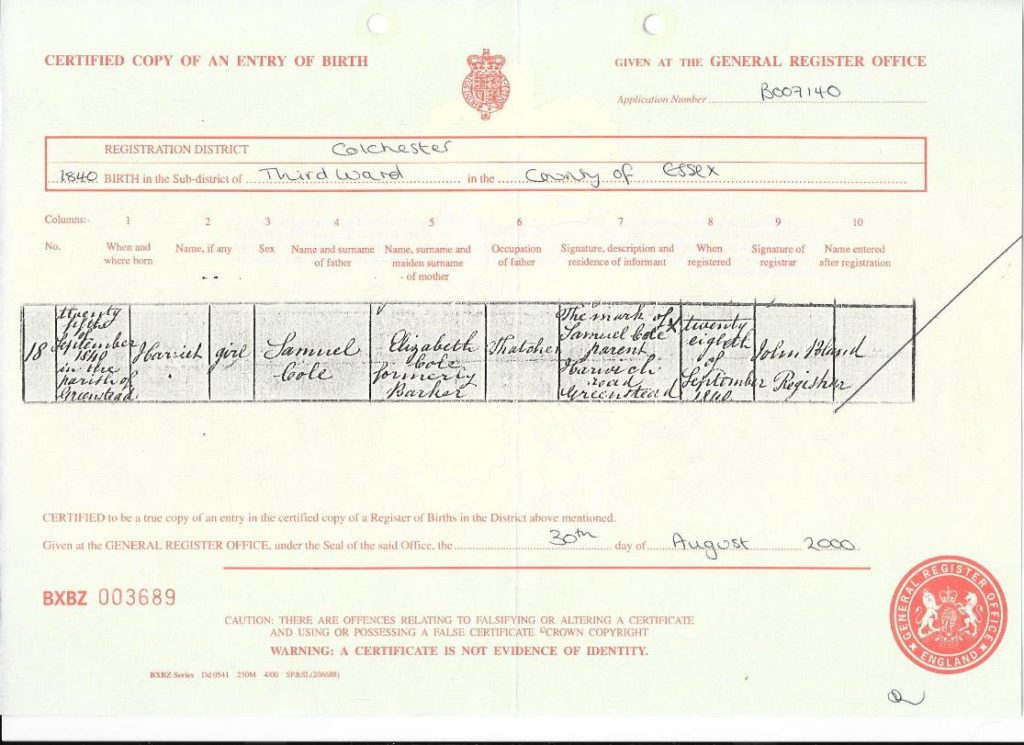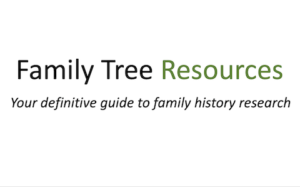Although you want your family tree to be accurate, there are times when even with the best of intentions you may find that your tree contains inaccurate information. You should be very careful when adding information to a tree, even when it is information obtained from original records, because the information contained in the records may be inaccurate.
A transcription of a record such as a parish register may have been incorrectly transcribed into a bishop’s transcript or the information provided by our relatives to the authorities may not have been correct. People did not always know the intimate details of their lives such as their date and place of birth, or they had secrets they wanted to remain hidden.
Do Not Rely on Family Trees Compiled by Other People
Family Trees in the past relied on stories told by relatives. Early genealogists may not have checked their accuracy, so added incorrect information to their trees.
You should not rely purely on the information provided to you because older relatives can sometimes remember details incorrectly, so stories told by our ancestors must be verified using other sources as much as possible.
One of my relatives had compiled a small family tree, but on this tree, she had mistakenly added incorrect information as she was working on information provided to her by my grandmother, listing the wrong people as my direct ancestors.
The Accuracy of Census Returns
Enumerators did not always understand people’s accents, so entered a phonetic spelling of the name or surname, making their best guess as to the correct spelling of the name. Many people were illiterate, so had no way of knowing if the information had been entered correctly.
Do Not Rely on Just One Source When Researching Your Family Tree
If you only rely on one source of information, it can lead to you inadvertently researching the wrong line or hitting that brick wall. I have found examples of this in my own research. The marriage certificate of William Dunkley, who married on 12 October 1847 in Allexton, Leicestershire, stated that William’s father was Joseph.
Further research, using census returns and parish registers, determined that William was born in Roade, Northamptonshire in 1827, and was the illegitimate son of Maria Dunkley. Joseph was Maria’s brother and William’s uncle, not his father.
The birth certificate of Harriet Cole, who was born on 25 September 1840 in Greenstead, Colchester, Essex, stated that her mother’s name was Elizabeth Cole formerly Barker. Looking into this further, using census returns and parish registers, I discovered that Barker was her former married name, not her maiden name.

Elizabeth Dammant married William Barker on 4 October 1815 in Greenstead, and, following William’s death in 1833, married Samuel Cole on 9 December 1836, also in Greenstead.
Finding Illegitimacy in Family History Research
If you find illegitimacy in your family history, and most people will find at least one illegitimate ancestor at some point in your research, it makes verifying the father’s name that much more difficult.
You may discover that the father is mentioned in a record such as a bastardy bond, the event was recorded in the newspaper, or the clergyman entered his name into the record, but that was not always the case. It could make researching that particular line virtually impossible.
Priest May Not Understand Accents of Parishioners
The priest may have come from another parish so was unfamiliar with local families. It is also possible he may have misheard what was being said to him, entering incorrect information in the record.
Change From Julian to Gregorian Calendar
When you are researching a period prior to 1752, you must remember that, prior to that point, the year actually began on 25th March and was known as the Julian Calendar. April to December 1745 came before January to March. 20th March 1745 would now be entered as 20th March 1746, so should be written on your tree as 20th March 1745/46 to signify this change. After 1752, the Gregorian Calendar was used, in which the year started on 1 January.
Old Handwriting Problems
As you progress with your research, and start researching further back in time, you may find that handwriting becomes more difficult to read. Adding that to the alternate spellings of surnames in earlier centuries may mean that mistakes can be made because the handwriting was misread, e.g. Steel could be incorrectly written in a transcription as Heel and vice versa.
How To Avoid Inaccuracy When Using Online Family Trees
If you find research compiled by a third party, you should check that the information is accurate by checking these details for yourself using original records whenever possible.
If for example you come across a tree where a person had a child when they were six years old, after they died, or the child was born after they died, it is evident that the information is incorrect so any details contained in that tree should definitely be verified before being added to your own tree.
It is also important to verify the father’s or mother’s names added to a person on a family tree by checking a birth record, marriage certificate or census entry (preferably all three if possible).
If you find a birth date is mentioned but there is seemingly no evidence to back up that assumption, you should always try to verify the information by checking death records such as the Social Security Death Index if the person died in the United States, or the GRO Index if the person died in England and Wales, but please note that birth dates were not added to death records until 1969.
Although some online trees are obviously inaccurate, and should be thoroughly checked and verified, some are very good and include the sources of the information contained within, making it that much easier to verify the information.
Online trees can be a good starting point for your research, but should never be considered as a substitute for doing your own research. If you rely purely on other people’s research and family trees, you will lose the opportunity to have that eureka moment when you finally track down that illusive ancestor, sometimes after several years of research.
I have come across instances where it is evident that the details have simply been copied from another person’s tree without being checked so all the trees contain the same erroneous information, and if you look more closely at the source of the information, you will find that another person’s tree has been noted as being the source. Another person’s tree should never be used as a source.
Tracing a Family Tree Back to the Middle Ages
If a tree has been traced back to a time period prior to the Middle Ages (before 1400), it should be perused with caution because the records were not so prevalent at that time, especially of commoners.
It is different, however, if your ancestors were nobles or royalty because more records were kept, but even when following this line, there will be gaps in the records, so you must be very careful. It can be incredibly difficult to trace a family tree at this time, especially if you are going back to a period when surnames were not used in the way they are today.
Do Not Read Source Too Quickly When Researching Family Tree
It is always easy to miss one word if you do not read carefully enough or too quickly. That one fact, such as a person being widowed or a person’s father being deceased, could lead you to follow the wrong line.
You should always check your work thoroughly, especially your earlier work which may contain errors you have overlooked.
It is crucial to always cite your sources – they can help you to easily find the information again should you need to, and, if you share your tree with other people, give them the confidence that your tree contains accurate information.
